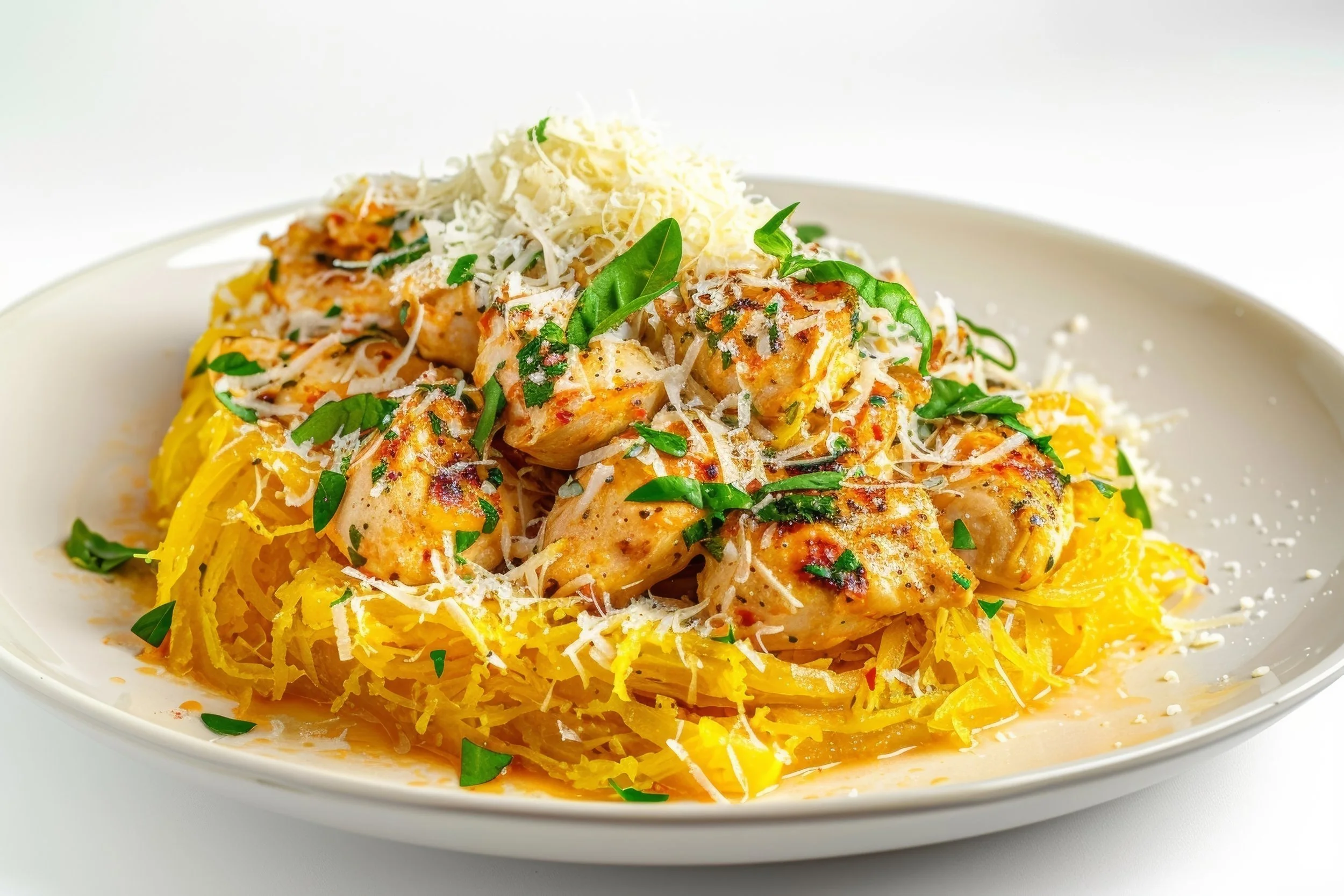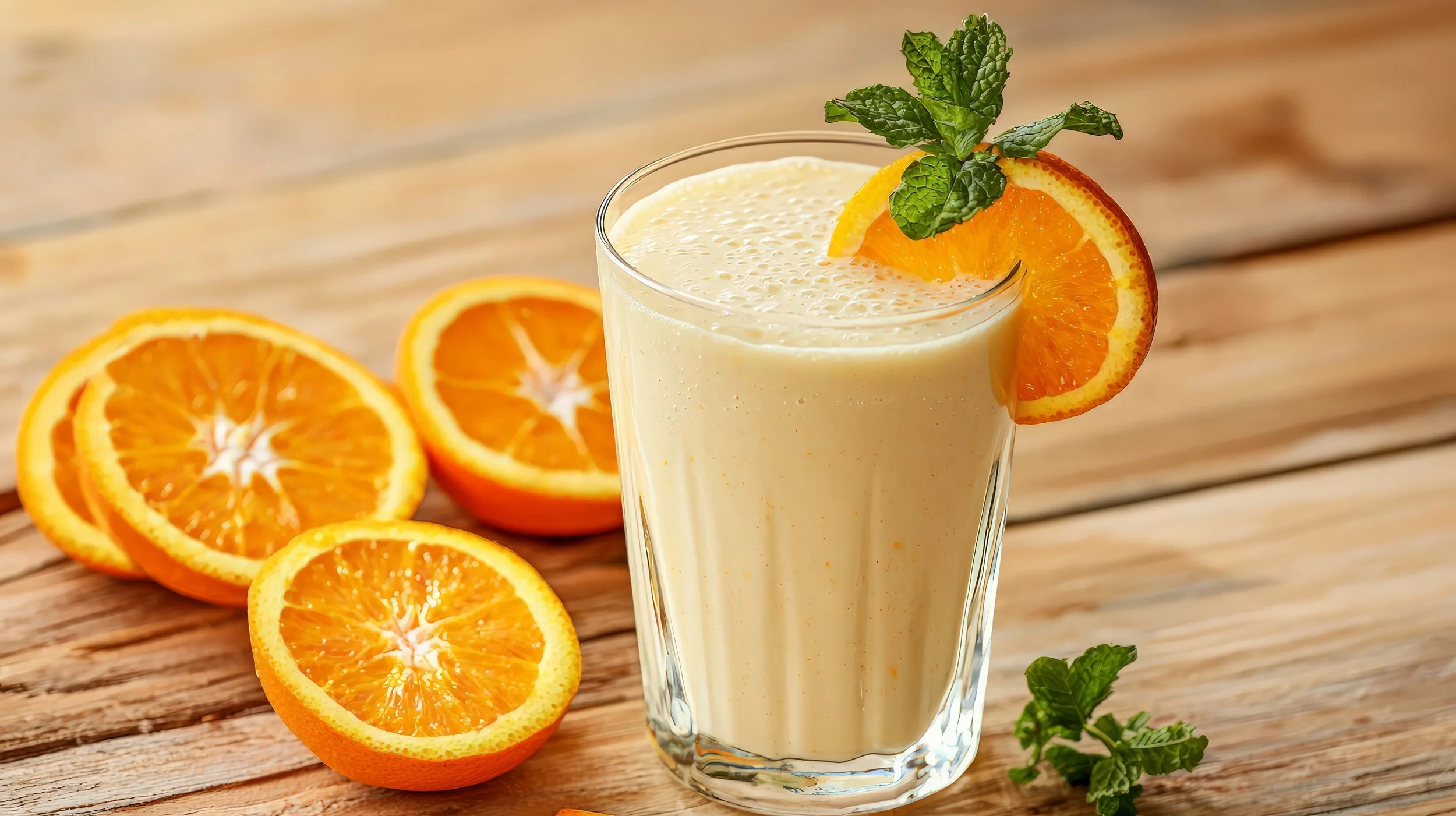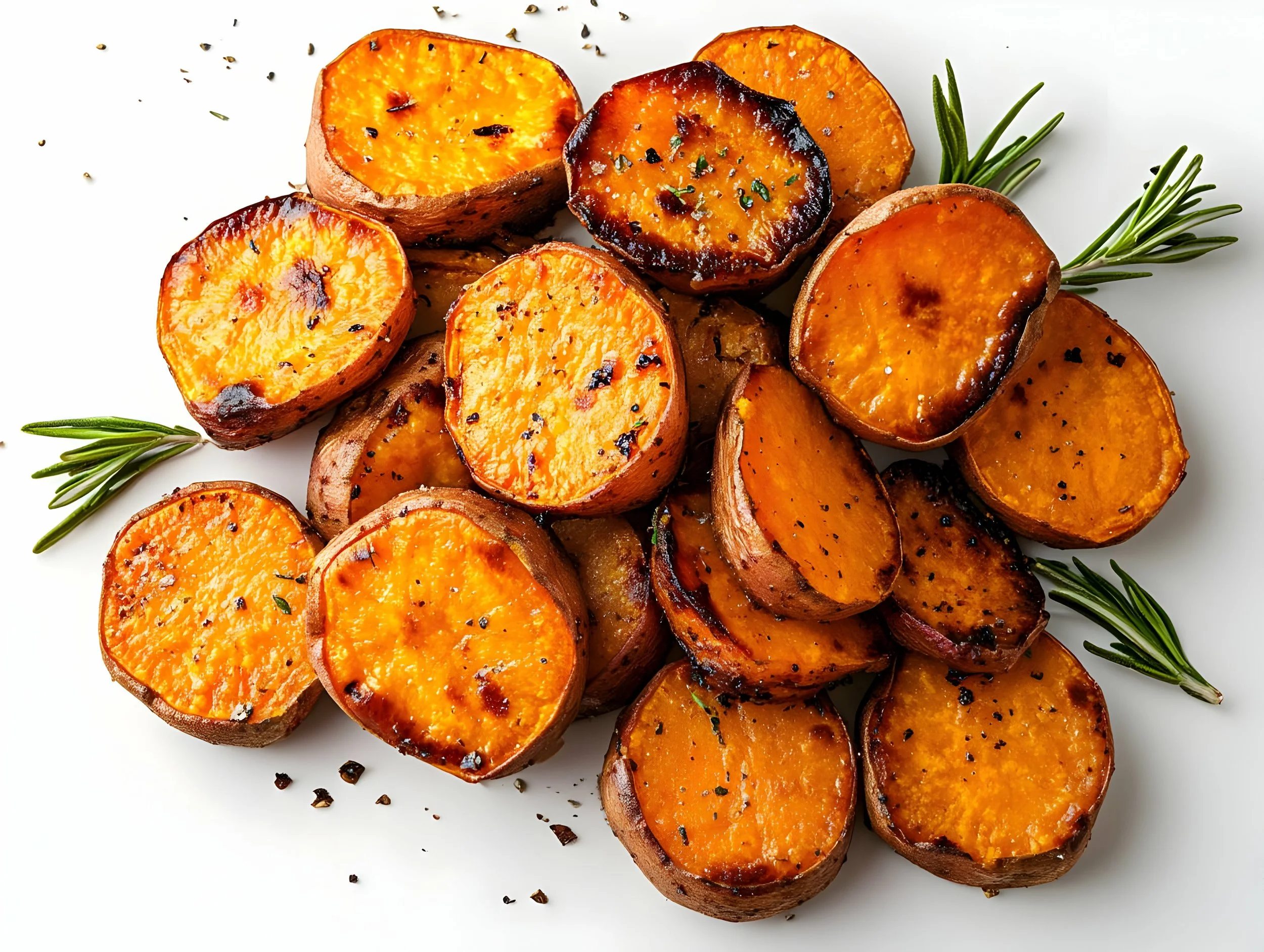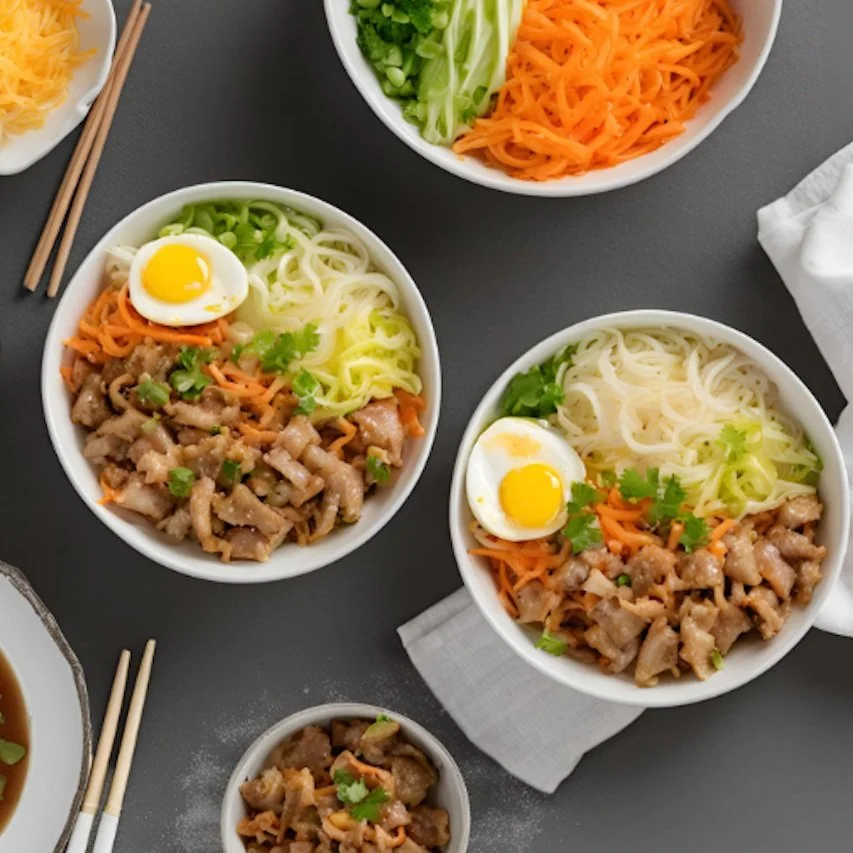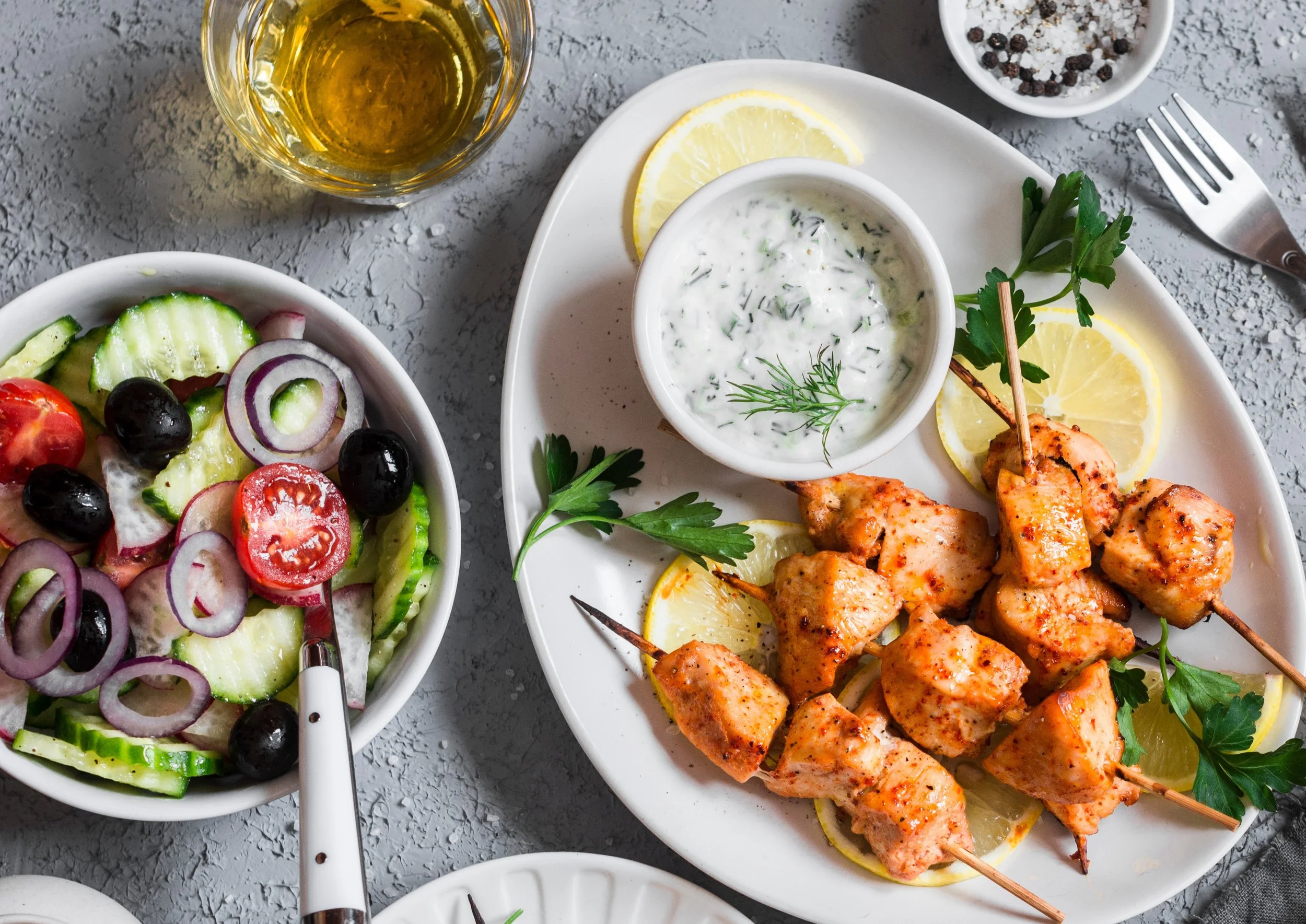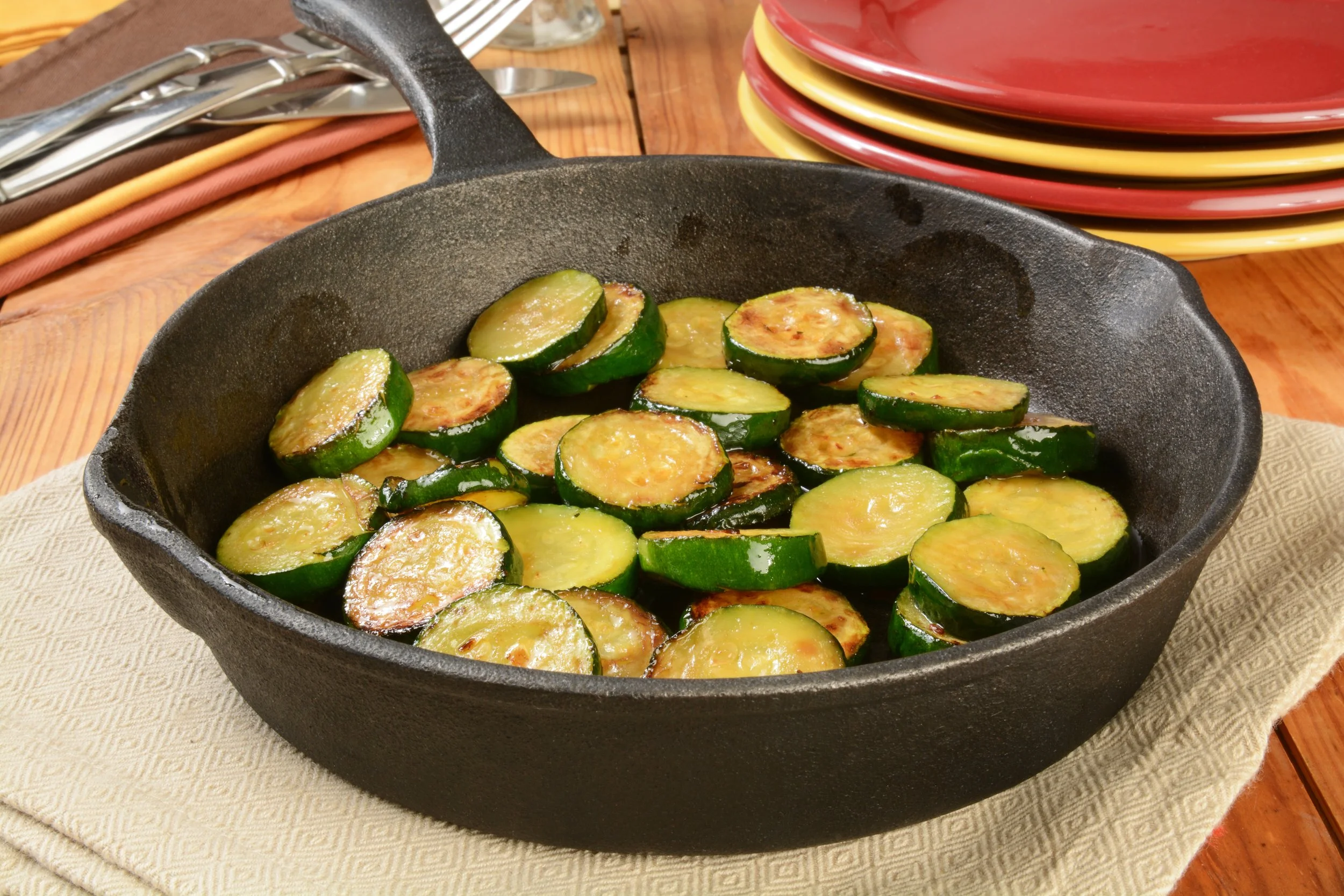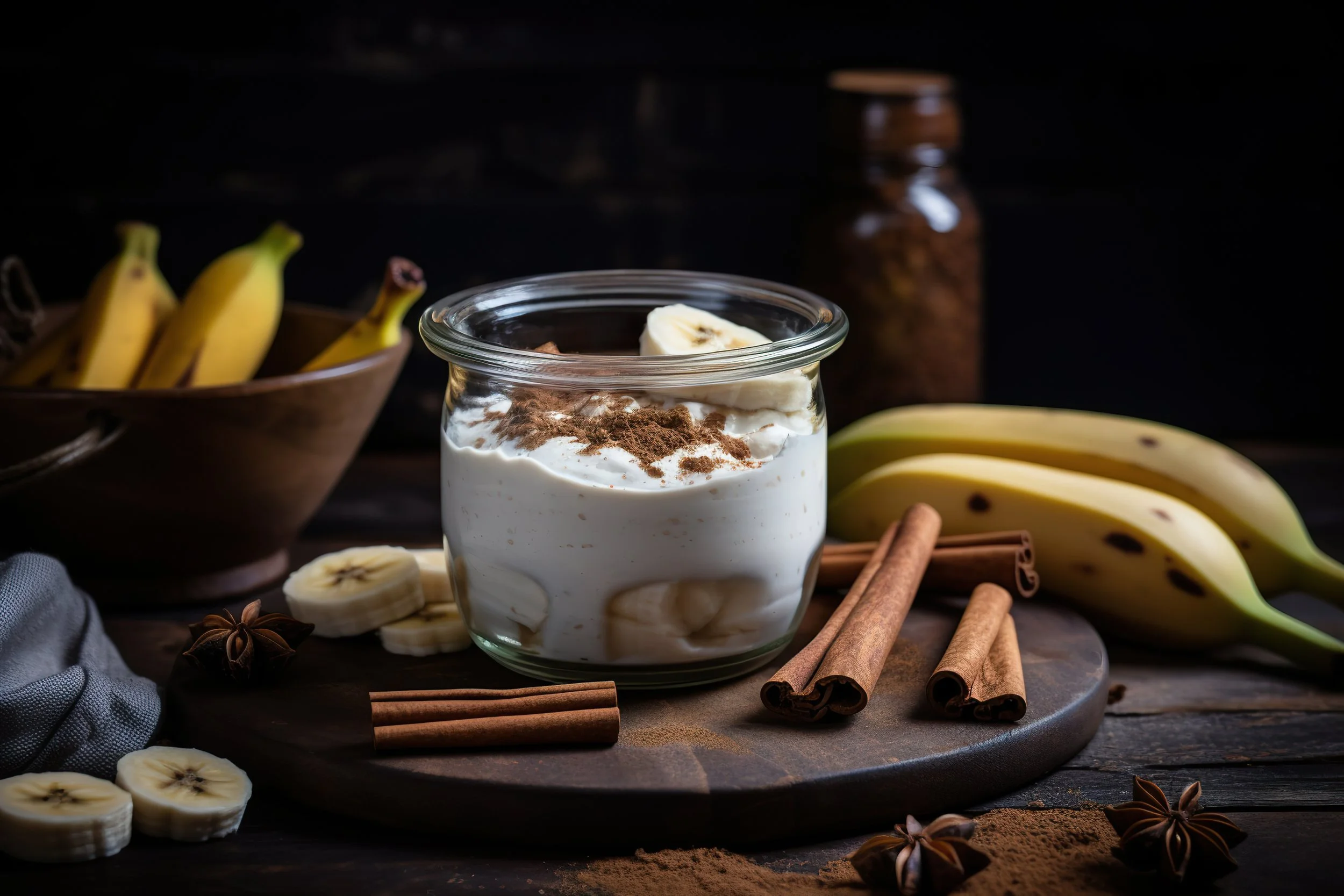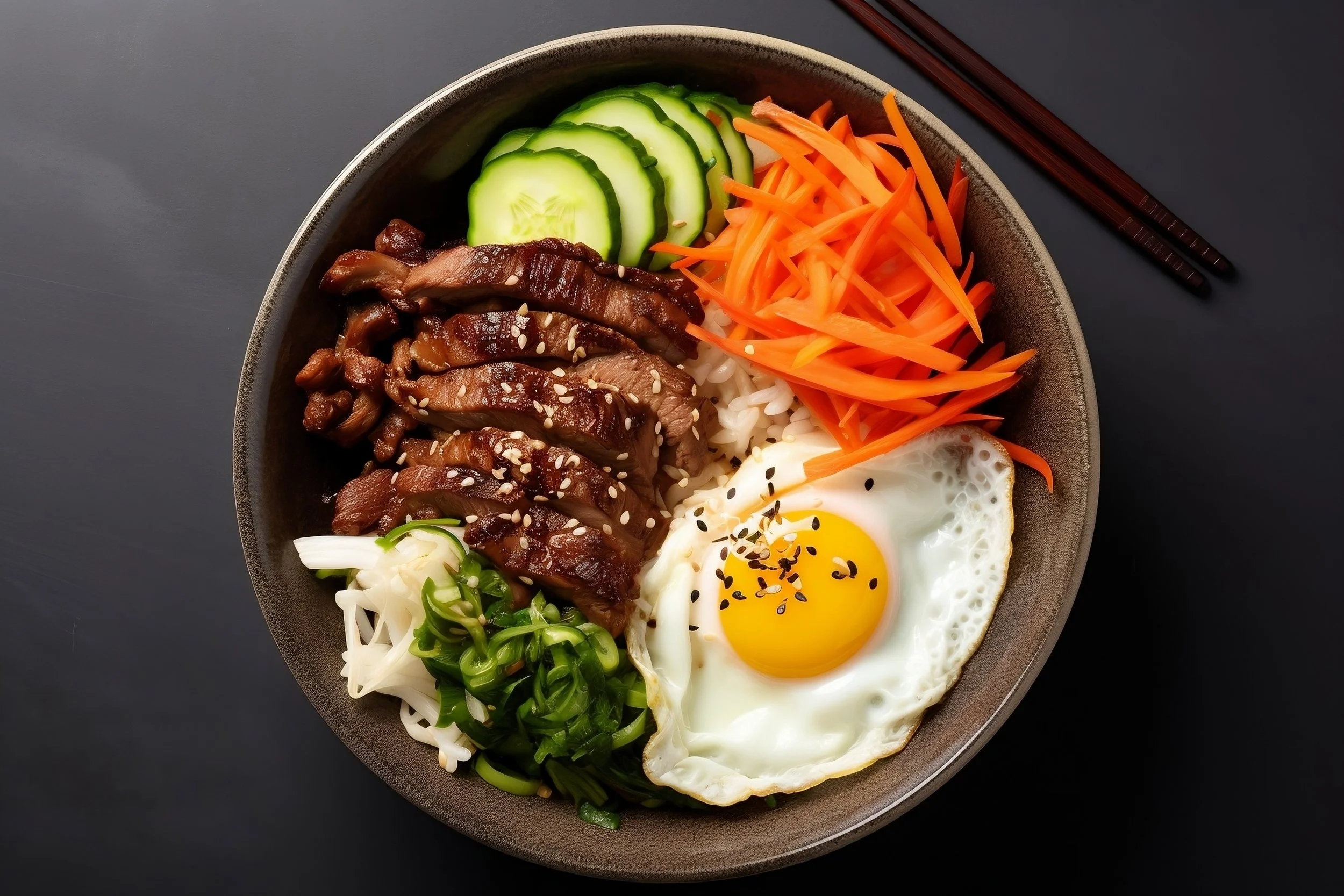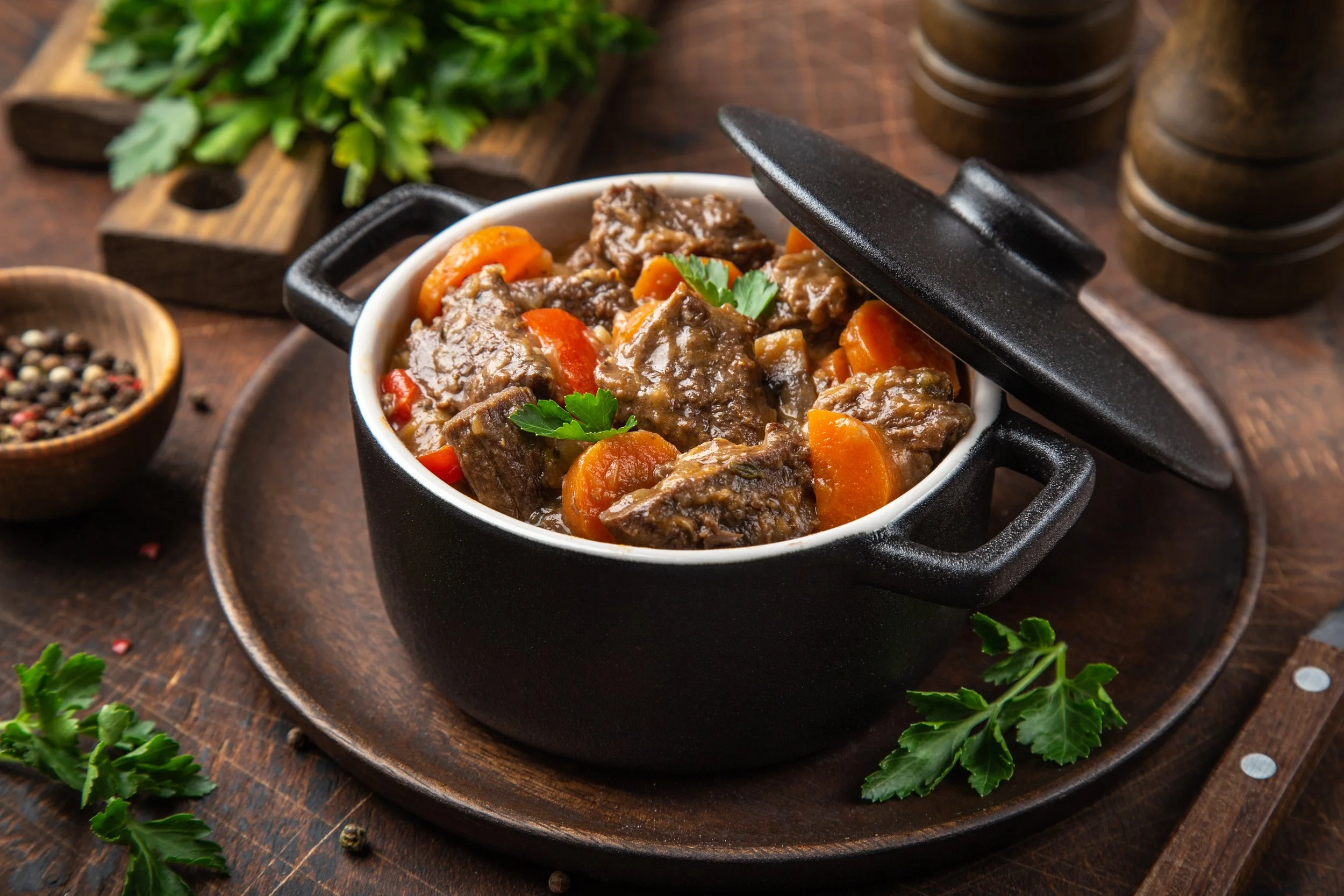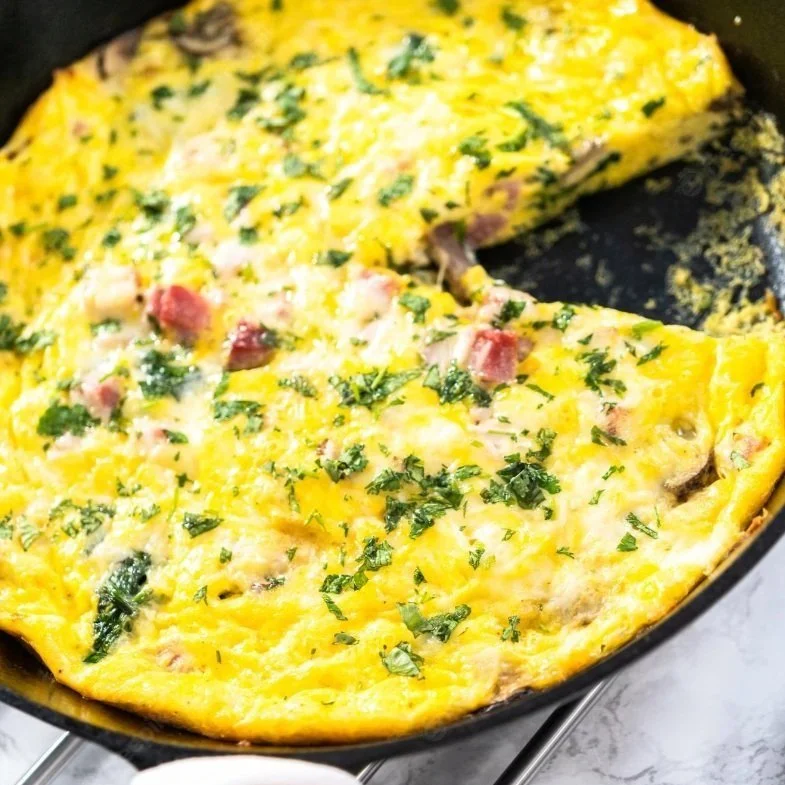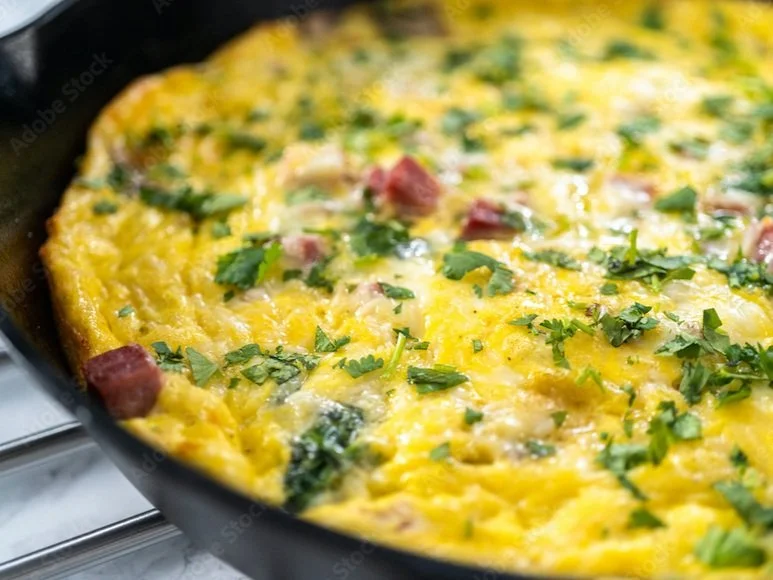Creamy Spaghetti Squash with Chicken and Parmesan
This has quickly become one of my favorite quick weekday lunches. I can prep a couple spaghetti squashes on the weekend, and then have the shredded squash and chicken ready to go, and just assemble the meal in minutes. If it’s for a crowd, I would recommend combining everything in a casserole dish and baking it in the overn, which I do have another recipe for. This is more of a quick meal for one person. Enjoy!
Ingredients:
2 cups cooked spaghetti squash, shredded
3-4 oz cooked chicken breast, chopped up
1/2 Cup Milk of choice, I use skim raw milk separated with this
2 Tablespoons of shredded parmesan
1 teaspoon garlic powder
1 teaspoon dried italian seasoning or fresh basil
Salt to taste
A little melted butter for pre-baking the spaghetti squash
Instructions:
Preheat the oven to 375. Cut the spaghetti squash in half with your biggest sharpest kitchen knife. Be careful. Scoop out the seeds with a spoon, and rub the inside of the squash with a little melted butter. Salt the inside of the squash, and place that side down on a cookie sheet with parchment paper. Bake in the oven for about 45-60 minutes until it softens and the spaghetti squash strands can be scraped out with a fork. This can then be stored in the fridge for a week.
Place 2 Cups of shredded spaghetti squash in a small saucepan, add all other ingredients and bring to a simmer, covered. When hot, serve and enjoy! If you’re using fresh herbs, add them at the end.
High-Protein Orange Julius Smoothie
I love this smoothie! I drink it with my breakfast almost every day—or sometimes for a quick lunch. It’s such a great way to make sure I get my collagen in daily. It’s also a great source of protein and healthy carbs!
If it’s your whole meal, use low-fat or full-fat yogurt to get some fats in. Or go with nonfat yogurt if you’ve got another fat source in your meal (like eggs or buttery sweet potatoes).
You can also switch up the fruit additions—this morning I added half a cup of frozen wild raspberries for extra carbs. I also love this little glass blender I found on Amazon, so I don’t have to pull out and wash my big Vitamix every time: https://amzn.to/40M02kw
Ingredients:
1 cup organic orange juice (I like pulp-free)
1 cup yogurt (I use nonfat or low-fat Greek)
1–2 tablespoons honey or maple syrup
4 tablespoons collagen peptides – I use this one
¼ teaspoon real vanilla extract
Small dash of sea salt
Optional: Add-ins like frozen fruit, mango juice, etc.
Directions:
Combine all ingredients in a blender. Blend until smooth, pour into a glass, and enjoy!
Roasted Sweet Potatoes
Sweet potatoes are probably my favorite food. I eat them almost daily. With eggs in the morning, in a curry, with chicken or beef for lunch or dinner. I often batch-cook these on the weekend to last me through the week, I can easily reheat them for a quick meal on a busy day. I’ve even taken to simply washing and slicing them with the skins still on, and then easily peeling them off just before eating them, to avoid the dreaded task of peeling them raw. I hope you love them as much as I do!
Ingredietts:
2 pounds of sweet potatoes, any size or color, cut into 1-inch rounds
2 Tablespoons of butter, melted
At least 1 teaspoon of sea salt
Optional: Garlic powder
Instructions:
Heat oven to 450 degrees. Put all ingredients into a large mixing bowl and toss well to coat. Place the sweet potatoes on a large baking sheet in a single layer. Pour any remaining butter mixture from the bowl over the sweet potatoes. Roast in the oven for 20 minutes, and then flip them with tongs. Roast for an additional 20-30 minutes, or until they are golden brown and easily pierced with a fork. Take out and enjoy! Leftovers can be kept in the fridge for up to a week.
Egg Roll in a Bowl
I just found this recipe and love it so much! My whole family loved it and I hope yours does too.
Ingredients:
2 pounds ground beef or seed oil-free ground pork, lightly salted while browning
1 cup shredded carrots
2 cups raw sauerkraut
1 t ginger powder
1 t garlic powder
3 T coconut aminos
2 T fish sauce
Poached eggs, one per person minimum
Small drizzle of sriracha
Instructions:
Brown the meat in a cast iron or stainless steel pan with a little salt. Add the shredded carrot, ginger powder, garlic powder, coconut aminos and fish sauce, and cook until the carrots are slightly softened. Turn off the heat and add the sauerkraut to warm through. Poach the eggs by boiling a saucepan of water and cracking the eggs into the simmering water, letting them cook through for a few minutes until the whites are cooked and the yolks are still runny, scooping them out with a slotted spoon. Serve in bowls with an eggs and a drizzle of sriracha. Enjoy!
Chicken (or Beef) Greek Dinner
This is one of my go-to dinners for the family. It’s super versatile, you can use chicken, lamb, or beef and then add whatever toppings you have on hand, like feta cheese and kalamata olives and chopped cucumbers. The real star here is the tzatziki sauce - which is super easy to make and can easily be made high protein/low fat for weight loss. I hope you love it as much as we do!
Ingredients:
Chicken, -boneless/skinless breast, chopped and seasoned with salt, garlic powder, and oregano
And/or Beef/Lamb - either steak, thin-sliced, or ground beef formed into kafta - long skinny burgers seasoned with salt, garlic powder, and oregano
Cucumbers, julienned or half moons
Kalamata olives
Feta cheese, European origin for animal-based rennet (American rennet is made from mold)
Optional: small amount of peeled, seeded fresh tomato and/or a little chopped red onion, unless you have digestive or autoimmune disease (these are column 3 foods)
Tzatziki sauce:
2 Cups Greek Yogurt (nonfat for protein-sparing, full fat for weight maintenace or gain)
1/3 Cup cucumbers, minced
1 tablespoon each fresh dill and mint
1 t garlic powder
1 tablespoon lemon juice (half of a medium lemon)
sea salt
Instructions:
Grill or sauteed the chicken and/or steak in a cast iron pan after seasoning. If making kafta, combine the ground beef with the seasonings and form into long skinny meatball-shapes, frying in a cast iron pan until cooked on all sides. Arrange all of the ingredients on a large serving dish or place each topping in it’s own bowl so that guests can make their own plates with their desired toppings. Spoon tzatziki sauce on top and enjoy! This dish also goes well with the sauteed zucchini recipe as a side dish.
Sauteed Zucchini
This is a great side dish for your steak or burger. It’s my favorite go-to side. I call zucchini and cucumbers the “freebies” because they are nontoxic nonsweet fruits that have almost no carbs or calories. Although cucumbers are served cold, zucchini can be cooked and flavored for a delicious warm side dish! Yum!
Ingredients:
1 zucchini per person, sliced into half-moons
1 teaspoon grass-fed butter per zucchini
sea salt
Optional: garlic powder, European feta cheese, oregano
Instructions:
Heat a cast iron to medium high. Melt the butter, spreading it around the bottom of the pan. Add the zucchini and cook for a few minutes, stirring often, until they are just cooked through but still firm. Add any optional ingredients and serve warm. Enjoy!
Bananas Awesome
My partner invented this dessert (and gave it this silly name) and it has quickly became our new favorite. It’s crazy how something so easy could be so delicious. Feel free to get creative with the toppings - I could see shredded coconut, berries, or nutmeg being fun additions.
Ingredients:
One banana per bowl, chopped
A pinch of sea salt
A few shakes of Ceylon Cinnamon
A small dollop of homemade whipped cream (1/4 C or less)
Optional: small drizzle (1 teaspoon) of organic salted caramel sauce, I like 365 Whole Foods Brand - found here: https://amzn.to/48xrsfK
Instructions:
Place the chopped banana in the bowl. Lightly salt the banana, add the few shakes of Ceylon Cinnamon, and a small drizzle of caramel sauce, if using (adds 4 grams of carbs from sugar). Prepare the whipped cream in another bowl with an immersion blender, using 2 T of heavy whipping cream for every serving of the dessert (it will double in size when whipped), with 1 teaspoon of honey or 2 drops of Nunaturals liquid vanilla stevia. Add a dollop of whipped cream on top of the banana and shake a little more cinnamon on top for garnish. Enjoy!
Korean Bulgogi (Bibimbap)
This recipe is one of my new favorites and the first night I made it, my partner and I and my 10 year-old son ate almost 4 pounds of meat in one meal! They both said it was the best meal I’ve ever made. So it officially went into the regular dinner rotation at our house and it’s so easy and delicious. Enjoy!
Ingredients:
2 pounds of thin-sliced steak, preferably grass-fed (Costco usually has thin-sliced ribeye or NY strip)
Marinade:
1/4 Cup Raw Honey
1/3 Cup Coconut Aminos
1/2 teaspoon Ginger powder or 2 teaspoons minced fresh ginger
1/2 teaspoon Garlic powder
2 Tablespoons Rice vinegar
Sides and toppings:
Minced fresh cilantro
Julienned blanched carrots
Julienned cucumber
Poached or soft-boiled eggs
Optional: White rice
Instructions:
Whisk all of the marinade ingredients and pour over the beef, stirring it in. Allow the marinade to sit in the fridge for at least 20 minutes and up to one day, covered. Grill or saute the beef in cast-iron until just cooked through. If using cast-iron, then broil the beef in the oven for 5 minutes to get a little char on the edges. Serve immediately with the sides, including blanched carrots (simmered in water for a few minutes), cucumbers, eggs, cilantro, and optional white rice.
Meditation
All humans can benefit from a meditation practice. Meditation is magical because it assists us in releasing the hold that the mind and emotions have on us. We learn to rest in awareness and to watch the mind’s thoughts and the body’s feelings, becoming the witness, the observer. The highest form of meditation, according to the masters, is to become aware of awareness, conscious of consciousness. When the thoughts arise in the mind, if we identify with them and think that we ARE the thinking mind, we create misery inside. When the feelings arise, and we block them or push them away in order to avoid feeling them, we harden our hearts and create more painful feelings in the long run. Thoughts are not who we are, and feelings are just sensations that want to be experienced, and released.
Meditation is the practice of becoming aware of what is constantly going on inside of us. Meditation gives us a break from being the “thinker” and allows us to be our spirit, the watcher, the observer of the thoughts and emotions. We get to rest back in spirit and feel the awareness within us. This practice allows us to clear away the garbage that is covering up our inate nature, which is joy and peace and love. That is what our spirit is made of, and we can’t experience that unless we uncover it. Children inately know this sense of spirit, they are present in the moment and notice the beauty in the world around them. We can look at the world with the eyes of a child, the beauty of our surrounding, the gratitude we feel when we see the big picture of this amazing planet and our place in it, the joy of being alive, the peace that comes from letting go.
Most of this world we have no control over. I don’t believe that spirituality is the feeling of solid ground, but that spirituality is the feeling of freefalling through space, hurtling down the rapids of life on an inner tube with nothing to hold on to. And rather than feeling fear about this, I believe that knowing how little control I have over life and its events helps me to stay in reality, helps me to let go and have faith and accept things as they truly are. And when I do this, I see a beautiful synchronicity to life and feel protected by life. This world was here for billions of years before me, and will be here long after as well. I am just a human on a speck of dirt flying through space around one of trillions of stars. My problems are not real, they are just thoughts in my mind and emotions in my body. True reality is that I only have a few years here on this amazingly beautiful planet, full of beautiful humans and animals and plants and rocks and mountains and oceans.
Meditation allows me to remember these things, these glimpses of reality. It allows me to quiet the voice in my head by ceasing to identify with it, and resting in the awareness of my spirit, watching this world unfold before me and enjoying the ride. If there are thoughts, I release them and watch them. If there are noises, I detach from them and hold my true center. If there is an ache or pain, I feel the joy deeper inside me and release my judgments of the sensations of the body. If my mind wanders, I guide it back to breath in this moment. We can use mantra - chanting a statement like “breathe in love, breathe out peace” or Om Namaya Shivaya, or anything we want to quiet the mind and give the mind something to focus on. Mainly I just attempt to hold awareness, being aware of being aware like a fun house mirror stretching into infinity. And I rest in spirit, in the present moment, full of love and light and beauty and joy.
Beef Stew with Carrots
This is the perfect fall meal. I have a Halloween bonfire in my front yard every year, and I make a big pot of this stew for my friends and family. There’s nothing quite like a steaming bowl of beef stew with thick gravy and warm carrots on a chilly fall or winter evening. Enjoy!
Ingredients:
2 pounds of bone-in beef roast, chopped into 1 inch cubes
6 cups of chopped carrots
1 T onion powder
1 T garlic powder
3 cups beef broth
sea salt
optional: 1 T tomato paste
optional: 2 T potato starch, in a slurry with 2 T warm water before adding to stew
optional: a couple handfuls of crimini mushrooms (baby portobello), halved or quartered
Instructions:
I like to make this stew in a large dutch oven on the stovetop, but you could easily make it in a slow cooker or an Instapot instead. The reason I use a stovetop is because the stew meat needs to simmer for 3.5 hours and the carrots (and optional mushrooms) only take 20 minutes, so I like to add them at the end. To start, add the beef, salt, garlic powder, onion powder, and broth to the dutch oven or large pot on the stove and bring to a boil. Reduce the heat to low, cover, and simmer for 3 hours, until the meat is starting to become tender. Add the chopped carrots and any optional ingredients, and continue to simmer until the carrots are cooked through, about 15 more minutes. Serve hot and enjoy!
Ham & Cheese Frittata
This is such an easy weekend breakfast, and I like to double the recipe because then there are leftovers for the week! Just warm in the microwave or in a covered cast iron pan with a little water and it’s a quick and easy breakfast that is just as delicious the next day. Low- or fat-free ham (without nitrates or other weird ingredients) is a great way to enjoy high-protein pork without the seed oils that are usually present in pork fat.
Ingredients:
1 dozen eggs
1/2 C dairy (preferably raw): milk, yogurt, or sour cream
1 C chopped ham
1/2 C shredded cheese, preferably raw (I like the Emmi gruyere from Costco)
1 T butter
Instructions:
Make sure your 12-inch cast iron pan is well seasoned. If it is not, you can warm it and rub it down with some extra butter before cooking. Preheat the oven to 400. Melt the butter in the pan and warm the ham through on medium heat. Beat the eggs in a bowl with some sea salt and stir in the cheese. Pour the egg mixture on top of the warm ham and turn off the heat under the pan. Put the pan in the oven and cook for 15-20 minutes or until the eggs are just set but not brown on top. Remove from oven just when a knife comes out clean. Invert the pan onto a cutting board so the frittata stops cooking and let it cool a minute before serving.
Ground Beef and Gruyere Zucchini Boats
This is a fun and super easy dinner that my kids love. It’s honestly one of the only ways I can get them to eat zucchini! You could use any cheese, although I’m in love with the Swiss Emmi-brand gruyere from Costco, which is raw and so delicious. Enjoy!
Ingredients:
4 large zucchinis, washed and ends cut off
2 lbs ground beef (lean for protein-sparing, or 80/20 for weight maintenance)
8 oz Gruyere, shredded
2 t dried italian seasoning
1 t onion powder
1 t garlic powder
sea salt
Instructions:
Preheat the oven to 350 degrees. Slice the zucchini lengthwise and scoop out the seedy insides with a spoon, leaving a little on the ends so the ground beef mixture doesn’t leak out during cooking. Combine the ground beef in a bowl with all of the other ingredients except the cheese and zucchinis. Place parchment paper on a cookie sheet and place all of the zucchini “boats” on the parchment, filling with the beef mixture, and covering with a layer of gruyere. Place in the oven for 30-40 minutes or until the cheese is brown and the zucchinis can be pierced easily with a fork. Enjoy!
How to Cook the Perfect Steak
Knowing how to cook the perfect steak is imperative to becoming animal-based! I love using cast iron pans for all of my kitchen cooking. Of course, nothing beats a steak on the grill, but if you want to cook your steak inside in cast iron, here is how!
Ingredients:
1 lb of steak for each person (ribeye for weight maintenance OR filet/lean sirloin/tenderloin for a protein-sparing day)
Butter for the pan
Sea salt
Optional: sprig of rosemary or sage
Instructions:
Make sure the steak is fully defrosted. It can be cold from the fridge or first brought to room temperature. Salt liberally with a high quality sea salt like Himalayan or Redmond’s Real salt on both sides. Place the cast iron pan on the burner and turn the heat to HIGH. Let the pan get good and hot for 1 minute, but not smoking. Add a small amount of butter to the pan, to just lightly cover the bottom with melted butter. Place the optional herbs in the butter, if using, and then push them off to the side of the pan. Place the salted steak in the hot pan as soon as the butter is melted but hasn’t yet browned. Turn the heat down to medium-high for a thinner steak (less than an inch), or medium for a thick steak (1.5-2 inches thick). Cook for 3-5 minutes until the bottom is nice and brown and a crust is beginning to form. Flip the steak and continue cooking on the second side and spoon some of the butter and juices from the pan back onto the steak as it cooks. You may need to continue flipping the steak every 3-5 minutes until it is done.
Optional: use a kitchen thermometer to check the internal temperature. I like to pull the steak out of the pan when the temperature is 10 degrees lower than the desired doneness because it will continue to rise about 10 more degrees. Rare is a final temp of 120, medium rare is 130, and medium is about 140. So, for medium rare, I like to cook my steak to about 120 degrees and it will continue to heat to 130 as it rests for 5-10 minutes on the cutting board. Resting also allows the juices to absorb so that they don’t run out when you cut into the steak. If you don’t have a kitchen thermometer, make a small incision in the middle of the steak in the pan to check for your desired doneness.
Honey Lemon Curd
Frankly, I don’t want to live a life without desserts like lemon curd. This is one of the reasons why I follow an “animal-based” way-of-eating, and not strict carnivore (zero-carb). Also, eating a little honey helps with electrolytes, sleep, and muscle cramping. I think our ancestors ate honey and fruit. This recipe is healthy and divine, although it is fairly high-fat and high-carb if you are protein-sparing. But what a great treat for a refeed day!
Ingredients:
2 eggs and 4 egg yolks
1/4 C honey, preferably raw
2 T butter, cut into small pieces
2 t lemon zest, finely grated
1/2 C lemon juice (about 2-3 large lemons)
dash sea salt
Instructions:
Mince the lemon zest with a food processor or a sharp knife. Cream the butter in the food processor, or use a hand mixer or whisk. Add the zest, honey, lemon juice, salt, eggs, and egg yolks. Mix until well combined. Pour the batter into a small saucepan and cook over low heat, whisking constantly until the curd coats the back of a spoon (just before a simmer) or reaches 165 degrees. Remove from the heat, add the butter pieces, and stir another minute. Pour into small custard cups and refrigerate until cool. Enjoy!
Photo by James Trenda on Unsplash
Swedish Meatballs
These are delicious, extremely healthy, high-protein, and can be made in 15 minutes. Serve with zucchini noodles stirred into the sauce at the end until they are warm, or sourdough pasta if you tolerate it!
Ingredients:
3 pounds lean ground beef
1 t garlic powder
1 t onion powder
3 large zucchinis, spiraled into noodles or thin sliced, or Sourdough spaghetti if you tolerated
1 C milk, preferably raw and skim
2 t sea salt, or to taste
1 egg, beaten
2 t Worcestershire sauce, optional
Instructions:
Combine raw beef, egg, and 1 t salt and form into meatballs. Brown these in a dutch oven or large cast iron pan until the outside is cooked (optional to butter the pan). Add dairy, onion powder, garlic powder, and Worcestershire sauce, if using and bring to a simmer. Place a lid on top and let the mixture simmer for 10 minutes until the meatballs are cooked through. I like to stir in the zucchini noodles just until warmed through (don’t overcook or the water will come out and make the sauce too watery). Enjoy!
Spaghetti Squash Beef Casserole
I saw someone post something similar on one of my carnivore groups this week and I immediately thought it was such a good idea! I made it right away and all 3 of my kids ate it up, so I knew it was a success!
Ingredients:
1 medium spaghetti squash
1 T melted butter
Sea salt
2 pounds ground beef
1 t garlic powder
1 t onion powder
1 C cream, preferably raw
1 C parmesan cheese
1/4 teaspoon lemon zest
1 C shredded cheese, preferably raw (I like Costco’s raw gruyere)
Instructions:
Preheat oven to 350. Cut the spaghetti squash in half lengthwise, and scoop out the seeds. Rub the melted butter all over the inside and salt liberally. Place inside-down on a cookie sheet and bake for 40 minutes. When they are cool enough, use a fork to scrape out the “spaghetti” from the squash rinds.
In a sauce pan, warm the raw cream to 120 degrees and stir in the parmesan cheese with a little salt and the lemon zest.
Brown the meat with salt, onion powder, and garlic powder.
Stir the spaghetti squash, beef, and alfredo cream sauce together in a large bowl and spread in a glass baking dish. Top with the shredded cheese and place under the oven broiler for a few minutes until the cheese is just melted. Serve and enjoy!
Salmon Poke Bowls
These are super easy, delicious, and versatile. Set out little bowls of all of the ingredients, and let your guests or family build their own! Top with tamari and pickled ginger and enjoy!
Ingredients:
Sushi-grade raw salmon, chopped
Julienned or sliced English cucumbers
Shredded carrots
Sliced avocado
Chopped mango
Chopped pineapple
Shredded nori
Wheat-free tamari sauce
Pickled ginger
White rice, if desired
Seed Oils: The Underlying Cause of Obesity and Disease
Seed oil started out as industrial machinery lubricant, and now the government is telling us it’s the healthiest food for the human body.
There is a hidden ingredient in our food that is causing obesity and common chronic diseases like diabetes and heart disease.
Although bacon cheeseburgers, carbohydrates, and sugar have traditionally been blamed for rampant obesity and metabolic disease, they are not actually the root cause. The hidden ingredient in our food—especially in almost all restaurant and processed food—doing the real damage to the human body is vegetable oil, more accurately called “seed oils.”
Seed oils are known scientifically under many names: linoleic acid, omega-6 fatty acids, and polyunsaturated fatty acids (PUFAs). Dr. Cate Shanahan, long-time nutritionist for the LA Lakers and author of Deep Nutrition, calls these oils the “Hateful Eight”—including soybean, corn, canola (rapeseed), safflower, sunflower, cottonseed, grapeseed, and rice bran oil.
None of these seed oils were historically part of the human diet. Our ancestors didn’t press oil out of soybeans or corn in the wild—in fact, humans didn’t eat grains or beans at all until relatively recently. Historically, our ancestors were hunter-gatherers who ate mostly meat and fruit. They primarily hunted large game (ruminant animals) and gathered eggs and ripe fruit. The traditional human fat sources included animal fat as well as fat from fruits like olives, avocados, and coconuts.
There are three basic types of fat: saturated, monounsaturated, and polyunsaturated. Saturated fat comes mostly from animal fats and coconut oil. Monounsaturated fats are found in fatty fruits like avocado and olive. Polyunsaturated fats are primarily found in seeds.
The 3 main kinds of dietary fat.
Saturated fat is solid at room temperature (think beef tallow and butter) because it is fully “saturated” with hydrogen, meaning it has no double bonds—so it resists bonding with oxygen and oxidizing. This allows the fat molecules to stack neatly, making them stable and solid. In contrast, mono- and polyunsaturated fats have one or more double bonds, creating “bends” in the chain that prevent them from stacking and make them liquid at room temperature.
If a fat is not fully saturated with hydrogen, oxygen can attach to those double bonds. Monounsaturated fats (with one bend) and polyunsaturated fats (with many) are therefore prone to oxidation. Oxidized fats go rancid and contribute to inflammation and disease in the human body.
The fats we eat get incorporated into our tissues. Every cell in the body has a phospholipid membrane—meaning the cell’s outer wall is made of fat. When those membranes are built from unstable polyunsaturated and monounsaturated fats, they become weak and prone to damage. This can lead to metabolic disease, including diabetes, obesity, heart disease, stroke, and cancer.
graph from optimisingnutrition.com
About a century ago, polyunsaturated fats were introduced into the food supply. It started with Crisco, a company that chemically processed cottonseed oil to market it as a “heart healthy” alternative to tallow, lard, and butter. Prior to WWI, cottonseed oil had been used to lubricate machinery. After the war, the surplus was sold to Americans as food.
Not only were seed oils introduced into human food, but they were also used in animal feed. Monogastric animals (like chickens and pigs) store the fats they eat without converting them. So, when they’re fed seed oils, we consume those stored PUFAs when we eat chicken skin or bacon.
Cows, on the other hand, are polygastric (with four stomachs) and have gut bacteria that convert even corn and seed oils into saturated fat. So, corn-fed beef still produces saturated fat–rich tallow and butter. This makes ruminant fat (from cows, lamb, bison, etc.) the safest and most stable fat for humans. In the carnivore community, we say: “Cows are king.”
Even grass-fed cows contain a small amount of PUFA—red meat has ~3% PUFA in grass-fed and ~6% in corn-fed beef, or about 3 grams in a pound of 70% lean beef. Eggs also contain around 0.5g PUFA each unless the hens are corn- and soy-free. Since red meat and eggs are some of the best foods for humans, a small amount of PUFA is unavoidable—but the goal is to keep it under 10g/day.
Unfortunately, there is rampant misinformation in the U.S. about seed oils. Many doctors and nutritionists recommend high PUFA intake based on the idea that it lowers LDL cholesterol, which they associate with heart disease. But newer, more accurate studies show that lowering cholesterol does not prevent heart disease—and can even increase the risk.
Some researchers suggest that what matters is the ratio of omega-6 (PUFA) to omega-3 fats. But this is misleading. While omega-3s (like in fish oil) are technically PUFAs too, they’re not as harmful and may have some benefits. But focusing on the ratio is a distraction. The total amount of omega-6 fats is what matters most—and that number needs to be as low as possible. These fats are toxic, bioaccumulative, and extremely slow to detox.
The half-life of linoleic acid (the primary omega-6 in seed oils) is 680 days—meaning it takes nearly two years to clear just half of what’s stored in your body. It takes 4–7 years to fully detox from decades of seed oil consumption. Since this toxin is linked to obesity, diabetes, cancer, and other diseases, we need to avoid it like the plague.
So, how do we do that?
At home, it’s simple. Throw out all vegetable oils (they’re all seed oils), and use only beef tallow, butter, coconut oil, and high-quality olive oil. Avoid the fat from chicken and pork, but you can still enjoy the protein from boneless, skinless chicken breasts, fat-free ham, or lean pork loin.
Avoid all seeds, beans, grains, and nuts—they’re packed with seed oil and other plant defense chemicals.
The harder part is restaurants. Studies show up to 40% of the calories in a typical restaurant meal come from seed oils. Everything fried, sautéed, or dressed in sauce is usually cooked in them. French fries, ranch dressing, stir-fries, sautéed onions, chicken wings—it’s all seed oil.
However, a few restaurants use beef tallow fryers (e.g., some Buffalo Wild Wings locations) or butter-based cooking. Your safest bets are steak and burgers (no bun or mayo), since those are usually grilled without added oil. Ask for butter packets or bring your own. For salads, ask for oil and vinegar and add your own dressing. Call restaurants in advance when they’re slow and kindly ask about their cooking fats.
Even some “butters” in restaurants are 50% seed oil blends. Fast food burgers, surprisingly, are often 100% beef and free from seed oils—just add tomato, pickles, onions, and mustard if you like.
In France and Italy, traditional cuisine avoids seed oils. This is part of the “French paradox”—they eat lots of fat and carbs but don’t get fat or sick like Americans. Authentic European restaurants are more likely to use real butter and animal fats, but in the U.S., always confirm.
What happens when you stop eating seed oils?
After removing seed oils and keeping PUFA intake below 10g/day, I noticed rapid improvements. Within three months, I could eat moderate carbs without gaining weight or triggering intense cravings. I felt stable and normal again—like when I was a kid.
Another benefit? No more sunburn. Many people in the carnivore and pro-metabolic communities report that eliminating seed oils makes them more resistant to sun damage*. This makes sense—our ancestors lived near the equator and were exposed to lots of sun without sunscreen or clothing. It’s not the sun causing sunburns; it’s the unstable oils in our tissues and the chemical sunscreens damaging our skin.
What should you eat instead?
The best way to heal is to eat what our ancestors ate: meat, fruit, and eggs. Fruits (technically the sweet part of the plant that holds seeds) include not just apples and oranges, but also avocado, olives, cucumbers, squash, and coconuts. Some people also tolerate cooked root vegetables like carrots and sweet potatoes. Meat and fruit don’t contain plant toxins or seed oils—and they’re what our bodies are designed to thrive on.
Beans, grains, and nuts? These are seeds, and they’re full of both PUFAs and plant toxins (gluten, lectins, oxalates, phytates, saponins, etc.). Humans aren’t designed to digest seeds—and our ancestors rarely ate them unless they were fermented or sprouted to reduce toxicity.
Even olive oil and avocado oil, while monounsaturated and lower in PUFA, are prone to oxidation if not cold-pressed and stored in dark bottles. Plus, studies show 80% of these oils on the U.S. market are adulterated with seed oils*. Thankfully, Costco’s Kirkland Signature olive oil and Chosen Foods avocado oil are among the few verified pure brands.
The food industry is not protecting you. From replacing tallow with canola in the ‘80s to allowing mislabeled oils today, there is massive fraud and corruption. But you can take back control of your health.
Start today. Throw out your seed oils. Choose beef, butter, eggs, and fruit. Bring your own butter to restaurants. Call ahead and ask about ingredients. Support restaurants that use real fats. Share this knowledge.
The benefits? You’ll lose weight, burn fat, stop sunburning, reduce cravings, and heal long-standing health issues. You’ll feel stable, energized, and in control again.
Even if you cheat and eat junk food—never eat seed oils. Just remember: it takes 680 days to clear out half.
Within 3 months of reducing PUFA to under 10g/day, I started healing and losing weight. You can too.
Additional references:
https://drcate.com/pufa-project/
https://drcate.com/category/food/seed-oils/
https://www.zeroacre.com/blog/linoleic-acid-facts
https://www.ncbi.nlm.nih.gov/pmc/articles/PMC3195369/
https://pubmed.ncbi.nlm.nih.gov/27071971/
https://www.ncbi.nlm.nih.gov/pmc/articles/PMC5492028/
https://pubmed.ncbi.nlm.nih.gov/24853887/
https://www.ncbi.nlm.nih.gov/pmc/articles/PMC2373379/
https://www.worldatlarge.news/function-health/linoleic-acid-as-driver-of-heart-chronic-disease
Coconut Thai Curry Chicken
Delicious stick-to-your-ribs meal for a chilly day!
This high-protein meal is perfect for a chilly fall day. It can be modified to be protein-sparing by using light coconut milk. Enjoy!
Ingredients:
4 boneless, skinless chicken breasts, cut into bite-sized chunks
1 T coconut oil or butter
1 can organic coconut milk with no gums - I like Native Forest
1 C bone broth
2 C chopped carrots
1 t fish sauce
1 T wheat-free tamari or Braggs coconut aminos
1 t garlic powder
1-inch piece of ginger, peeled and minced, or 1 t ground ginger
1 t onion powder
1 t ceylon cinnamon
1/2 t turmeric powder (optional)
1 T dried cilantro leaves (not coriander seed)
1 t fish sauce (gluten free)
1 T dried Thai basil
Directions:
Heat a large cast iron pan on medium-high. Add the coconut oil or butter, chicken breast chunks, tamari or aminos, and ginger. Stir-fry until chicken is cooked through and onion is soft. Add all other ingredients and stir well. Simmer until the carrots are soft, about 20-25 minutes and serve.
Coconut Curry Shrimp
This is a fun and quick weeknight dinner, super flavorful and colorful. You can use full-fat coconut milk if you’re at your goal weight, or light coconut milk on a weight-loss protein-sparing day. Other kinds of seafood can be substituted for the shrimp, like fish, scallops, clams, or calamari. Enjoy! Serves 2.
Ingredients:
Shrimp:
2 pounds of medium shrimp
1 T coconut oil
dash sea salt
Sauce:
1 can coconut milk, no gums - I like Native Forest
1 T fish sauce
1 T tamari sauce
1 t garlic powder
dash onion powder
2 t minced fresh ginger or 1/2 t ginger powder
1/2 t ceylon cinnamon
1/2 t turmeric, optional
3 T chopped Thai basil, optional
lime slices for serving
Instructions:
Whisk all the sauce ingredients together in a small bowl and set aside. Heat up the coconut oil a large cast-iron/stainless steel/copper pan on high until hot. Add the shrimp and the dash of sea salt, stirring constantly with a wooden spoon until the shrimp are pink and cooked through, a couple minutes. Pour in the sauce. Stir until hot and well combined, and remove from heat. Add more fish sauce and/or tamari to taste, for saltiness. Sprinkle herbs on top. Serve immediately with limes on the side.


